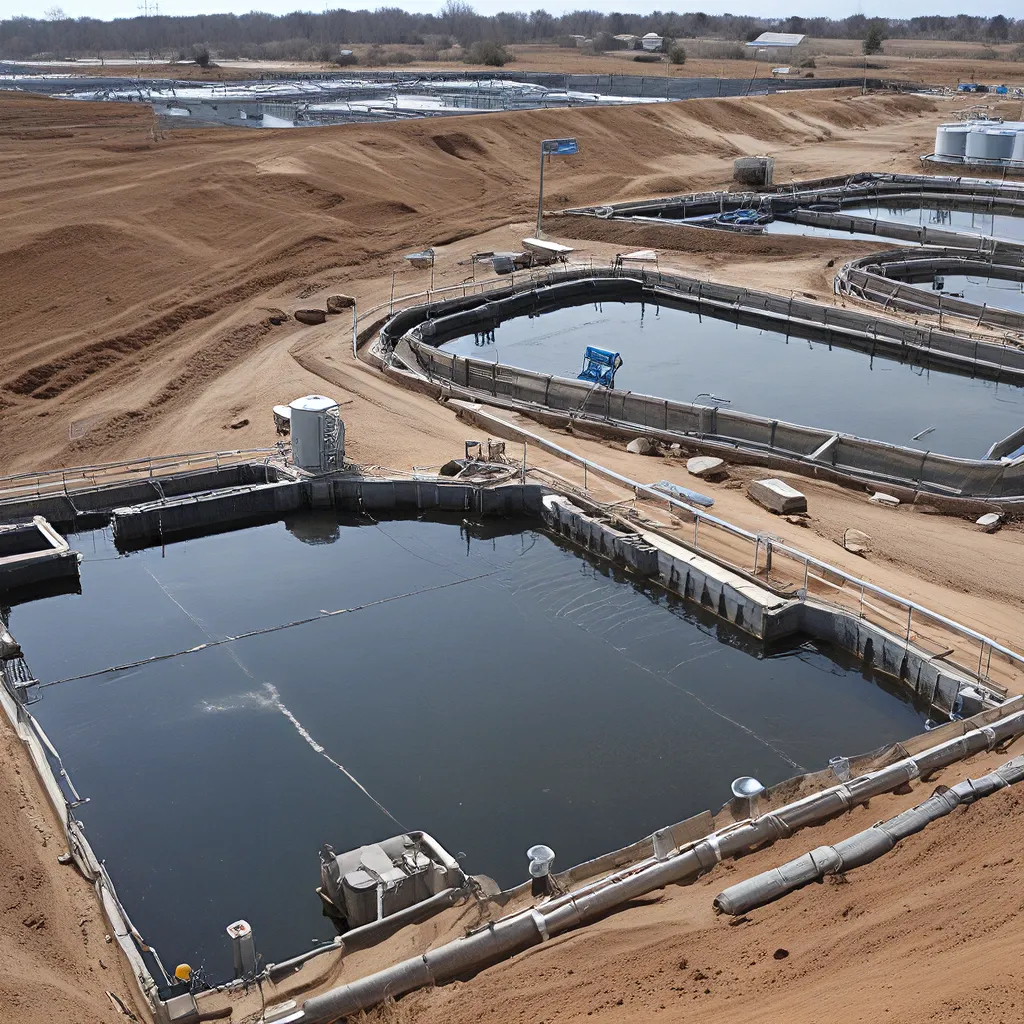
As someone deeply passionate about sustainable water management, I’ve been fascinated by the rapid advancements in wastewater filtration technologies. It’s truly remarkable how far we’ve come in our ability to treat and reuse this precious resource.
Let me take you on a journey through some of the most innovative and impactful wastewater filtration solutions that are transforming the way we approach environmental responsibility and business outcomes. From anaerobic digestion to Moving Bed Biofilm Reactors (MBBRs), the options available today are nothing short of game-changing.
Harnessing the Power of Wastewater: Anaerobic Digestion
One of the most exciting developments in wastewater management is the ability to turn waste into energy. That’s right, the very stuff we’re trying to get rid of can actually be a hidden source of power!
Organizations with high-strength organic wastewater, often found in the food and beverage industry, are leading the charge in this area. By treating their wastewater anaerobically, they’re able to generate biogas that can be used to fuel everything from boilers to electric generators. Talk about a win-win – not only are they treating their wastewater, but they’re also producing renewable energy to power their operations.
According to industry experts, food and beverage manufacturers are increasingly exploring this approach, finding it more cost-efficient than mixing their high-organic waste with municipal sewage. And the benefits don’t stop there – the treated wastewater can even be used to amend soil and provide valuable nutrients for crop production.
Maximizing Efficiency with Moving Bed Biofilm Reactors (MBBRs)
Another innovative wastewater filtration technology that’s gaining traction is the Moving Bed Biofilm Reactor (MBBR). This system, first popularized in Europe in the 1980s and 1990s, suspends plastic “honeycomb” structures in an aeration tank, allowing beneficial microorganisms to attach and grow.
The beauty of MBBRs is their reduced footprint compared to conventional wastewater treatment systems. By creating a large surface area for microbes to thrive, they can handle higher organic loadings without taking up as much physical space. This makes them an attractive option for facilities with limited real estate or those looking to upgrade existing infrastructure.
Interestingly, the article mentions that MBBR systems can be used in both aerobic and anaerobic applications, allowing for even greater flexibility and optimization. In fact, a recent pilot study at a European food plant showed that combining aerobic and anaerobic MBBR systems could efficiently remove chemical oxygen demand (COD) while also producing biogas – talk about a double whammy!
As the article highlights, MBBR technology is continuously evolving, and it may very well be the optimal wastewater treatment method for operators looking to reduce their footprint and maintenance requirements.
Enhancing Existing Facilities: Innovative Filtration Combinations
But the innovations don’t stop there. Organizations are also finding creative ways to enhance their existing wastewater treatment facilities to meet increasingly stringent regulations and societal demands.
The article cites the example of a water pollution control commission that needed to upgrade its tertiary filtration system to comply with effluent phosphorous limits. By combining a disc filtration system with chemical conditioning, they were able to achieve a 90% reduction in effluent phosphorous – a remarkable achievement.
This type of innovative technology hybridization is becoming more and more common as organizations strive to find cost-effective and efficient ways to treat their wastewater. And the good news is that the EPA’s report on Emerging Technologies for Wastewater Treatment lists over 60 different technologies, ranging from research-stage to established processes, that could be combined to meet specific needs.
Choosing the Right Wastewater Filtration Solution
With so many innovative options available, how do you decide which wastewater filtration technology is best for your organization? The key is to thoroughly understand your specific needs and regulatory requirements.
Alpha Wastewater has a team of experts who can help you navigate the complex landscape of wastewater treatment. They’ll work closely with you to assess your facility’s unique characteristics, identify the optimal treatment method, and ensure you’re meeting all relevant environmental regulations.
Whether you’re looking to generate renewable energy, reduce your facility’s footprint, or simply comply with increasingly stringent standards, Alpha Wastewater has the knowledge and expertise to help you find the perfect solution. And who knows – you might even discover a hidden opportunity to boost your bottom line in the process!
Embracing the Future of Wastewater Management
As our understanding of the environmental impact of wastewater continues to grow, and as technology advances at a rapid pace, the field of wastewater management is truly a frontier of innovation. From anaerobic digestion to MBBRs to hybrid filtration systems, the possibilities are endless.
But the true beauty of these advancements lies in their ability to benefit both the environment and the bottom line. By embracing these innovative wastewater filtration technologies, organizations can not only reduce their environmental footprint, but also unlock new revenue streams and operational efficiencies.
So, what are you waiting for? Take a deep dive into the fascinating world of wastewater filtration and see how Alpha Wastewater can help you discover the perfect solution for your organization. Who knows, you might even find a way to turn your waste into pure profit!